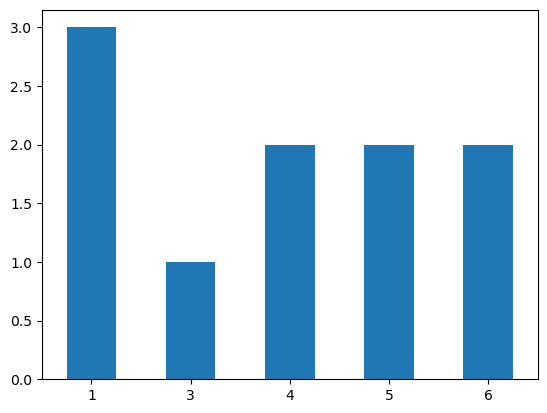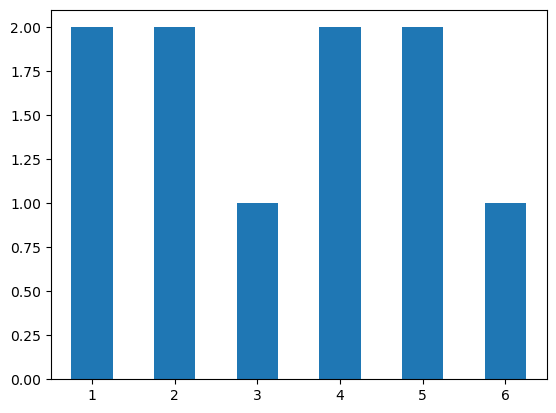Programming for Data Science
In this notebook, we demonstrate that you can put our class code in a separate .py file and then call it from within a notebook.
This is normal practice — class files cannot reside in notebooks if they are to be used by other code!
Open the file diegame.py in the course repo to inspect the code.
import pandas as pd
class DieGame():
"""
Just another Python class.
"""
n_rolls = 10
weights = [1,1,1,1,1,1]
def __init__(self):
pass
def create_die(self):
self.n_sides = len(self.weights)
self.my_probs = [i/sum(self.weights) for i in self.weights]
self.die = pd.DataFrame({
'side': range(1, self.n_sides + 1),
'weights': self.my_probs
})
def roll_die(self):
results = []
for i in range(self.n_rolls):
m--More--(38%)
We import the class in diegame.py into this notebook.
from diegame import DieGame
We initialize two objects.
= DieGame()= DieGame()
Sides: 6
Model:
1 0.17
2 0.17
3 0.17
4 0.17
5 0.17
6 0.17
dtype: float64
Rolls: 10
Sides: 6
Model:
1 0.17
2 0.17
3 0.17
4 0.17
5 0.17
6 0.17
dtype: float64
Rolls: 10
To demonstrate the point made in the previous notebook about class and instance attributes, let’s update our objects.
= 20 # This overrides the Class attribute = [1 , 10 , 1 , 1 , 1 , 1 ] # So does this 1 ) # But this also alters the static because this is not an assignment! = 50 # This should change dg2 but not dg1
= ['n_roles' , dg1.n_rolls, dg2.n_rolls, DieGame.n_rolls),'weights' , dg1.weights, dg2.weights, DieGame.weights)
= ['attribute' , 'dg1' , 'dg2' , 'DieGame' ]).set_index('attribute' ).T
dg1
20
[1, 10, 1, 1, 1, 1]
dg2
50
[1, 1, 1, 1, 1, 1, 1, 1]
DieGame
50
[1, 1, 1, 1, 1, 1, 1, 1]

